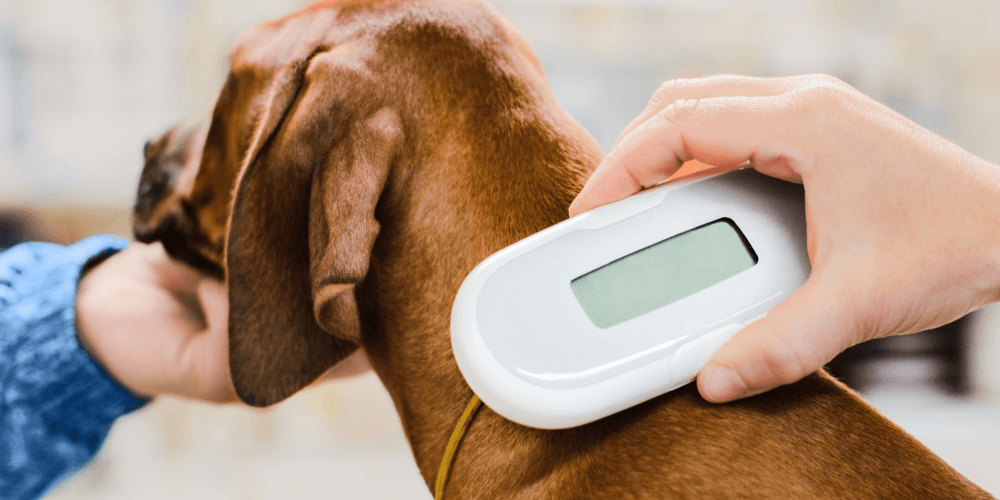How to Keep Your Dog Healthy with Whistle

Annual wellness exams are essential. Your veterinarian offers up peanut butter or cheese in exchange for a few moments to listen to your dog’s heart and lungs, peek into their eyes and ears and assesses their skin and joints to make sure your dog is healthy. It’s important to monitor your dog’s health between appointments.
How do you know if your dog is healthy? Monitoring their eating, drinking, exercise and sleeping habits and changes to behaviors like licking and scratching, and provide important clues.
10 ways to keep your dog healthy with Whistle
Set Activity Goals
Whether you have a senior dog who prefers a slow stroll around the block with lots of time to stop and sniff or a young, active breed who prefers to explore hiking trails at top speed, regular exercise is important.
The benefits of exercise for dogs includes improved joint health, fewer digestive issues and better sleep. Exercise can also help maintain a healthy dog weight.
Walks aren’t the only way to make sure your dog gets enough exercise. Taking your dog swimming, playing a game of fetch or navigating agility courses are other tips for getting fit with your pet also count toward your dog’s daily exercise needs.
Regular exercise is key for good dog health. Changes to their activity levels could be a sign that they’re not feeling well. Use Whistle devices will alert you if your dog’s daily activity increases or decreases.
Work toward weight loss goals
Regular exercise can also help your dog slim down.
More than half of dogs in the United States are overweight or obese, which puts dogs at added risk of serious health issues, including cardiovascular disease and arthritis; maintaining a healthy dog weight can even help your dog live longer.
Talk to your vet about a healthy dog weight based on their age, breed and health and use Whistle devices to create a custom fitness plan. Set fitness goals and use the Health 2.0, Go Explore 2.0 and Switch Smart Collar to track distance, minutes active and calories burned.
Switch up activities to keep your dog engaged. Choose a new route for a walk, sign up for classes in tracking or agility or select some new toys for fetch and tug-of-war to keep your dog moving.
Serve nutritious food
Your dog comes running at the sound of kibble hitting the bowl and their ears perk up at the mention of treats. Feeding your dog a complete and balanced pet food that is right for their breed and life stage is the best way to provide all of the nutrients they need for good health.
Look at the label on the bag or can to determine how much food your dog should get at each meal and monitor their portion sizes (even when your dog insists they are starving and should get a second dinner). Portion control is the best way to maintain a healthy
Use the Food Pantry feature included on all Whistle devices to create a virtual list of all of the foods that your dog eats along with their serving sizes and number of meals so that everyone caring for your dog knows exactly how much (and when) to feed them.
Whistle devices will also alert you to any changes in your dog’s eating habits. Call the vet if your dog isn’t eating; changes to your dog’s appetite could signal health issues.
Provide fresh water
Keep the water bowl filled to the brim with fresh, clean water.
How much water should a dog drink per day depends on their size, age, breed, activity level and weather but dogs need access to fresh water at all times.
Dogs who don’t drink enough water can become dehydrated and will show signs like dry, tacky gums and lack of energy that could be caused by bladder or urinary infections. Drinking too much is also a cause for concern. Increased thirst is linked with diabetes, kidney disorders, electrolyte imbalances and other health issues.
Whistle Health 2.0, Go Explore 2.0 and Switch Smart Collar makes it easier to monitor your dog’s drinking habits and make note of any changes.
Play stimulating games
Mental stimulation is important to your dog’s wellbeing. Skip the Sudoku and offer up more suitable doggie brain games like puzzle feeders, lick mats, interactive toys and tug of war or sign up for training classes or canine sports.
Enrichment activities are great boredom busters and can prevent negative behaviors like chewing, barking and digging. Mental stimulation helps release energy, builds confidence and eases anxiety, which is important for your dog’s wellbeing.
Call the groomer
Regular appointments with the groomer keep your dog looking (and smelling) their best but their spa days have health benefits, too.
Groomers will be on the lookout for fleas, ticks and other possible skin and coat issues. Your dog’s Whistle device monitors for increases in licking, scratching or other behaviors that could signal skin issues and will send alerts that something might be wrong.
Don’t skip the paw-dicure! Nail trims keep your dog’s nails from becoming overgrown and painful.
Schedule social time
Dogs are social animals. It doesn’t mean you need to bring home every stray or turn your living room into a doggie daycare, but introducing your dog to other four-legged friends does have some benefits: Playtime is great exercise and offers mental simulation and research shows that dogs who had companions lived longer, healthier lives than their less social canine friends.
Go slow with introductions. Dogs who are comfortable in social settings will have relaxed postures, wag their tails and offer a “play bow” with their butts in the air and their front legs extended) while dogs who are anxious will tuck their tails, lick their lips, growl or lunge on the leash.
Dogs who are less social can still benefit from opportunities to meet new people and explore new places. A trainer can build a shy dog’s confidence and help them feel more at ease in social situations.
Grab the toothbrush
Dental chews and rinses and special dental toys designed to remove plaque can be part of an oral care routine but dogs get the biggest benefits from regular tooth brushing.
Periodontal disease in dogs isn’t just painful; it’s linked to kidney and liver disease and other health problems. Regular brushing and professional dental cleanings that include scaling and polishing to remove plaque and tartar (and extractions to remove broken or infected teeth as needed) are the cornerstone of good doggie dental hygiene.
Bad breath is often the first sign of dental disease, which affects 80 percent of dogs, but other behaviors like lack of appetite, excessive drooling and red or swollen gums also signal that it’s time for an appointment with the doggie dentist.
Decrease stress
What’s so stressful about long walks in the park, naps on soft beds and parents who are trained to serve delicious food and treats every day? Nothing. But even the most pampered pooches can sometimes experience stress.
You might notice obvious symptoms of stress like diarrhea and vomiting and Whistle devices can track more subtle behaviors like licking, restlessness and changes to sleep behaviors that can also indicate your pooch is feeling anxious. The Daily Check-In feature also lets you track how your dog is feeling and link it to possible triggers like the weather or a new medication.
Provide a safe, comfortable spot, like a crate, where you dog can hide out during fireworks, thunderstorms or other stressful events and talk to your veterinarian about medications or training techniques that could help reduce stress and help your dog feel more at ease.
Schedule vet appointments
Don’t skip routine vet care. Wellness checks that include a physical exams and vaccines, bloodwork, fecal and urinalysis (as needed) are key for keeping your dog healthy. Your vet can also advise on the right flea, tick and heartworm preventives and share information about healthy dog weight, normal heart rate for dogs and other dog health tips.
Puppies will need more frequent vet visits to receive all of their vaccines; adult dogs should go to the vet clinic for wellness exams annually and senior dogs may require semi-annual vet visits to manage age-related health issues.
Outside of routine wellness exams, the Ask a Vet feature included with Whistle Health 2.0, Go Explore 2.0 and Switch Smart Collar allows you free access to licensed veterinarians to ask pet care questions.
Your goal as a pet parent is to give your dog the best life. Knowing the signs of a healthy dog and using a dog health tracker are easy ways to prioritize the health and wellbeing of your favorite four-legged companion.














